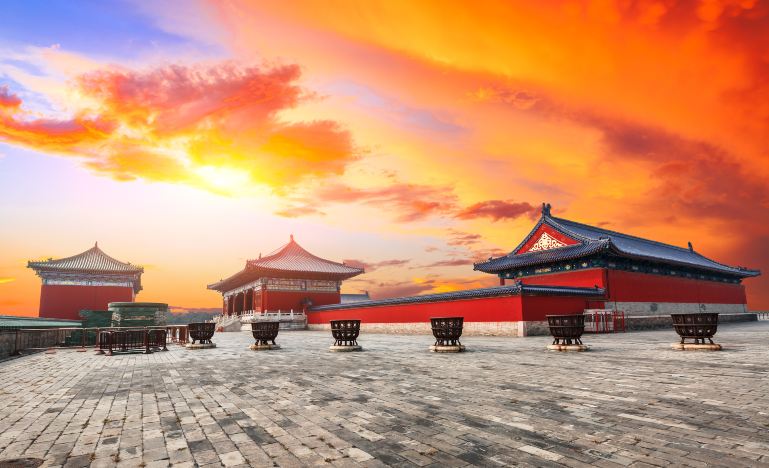
Beijing, Xi'an, Chengdu, Yangtze River & Shanghai: 13-Day China Heritage & Culture Tour
Product information
In-depth-CulturalPrivate-PartiallyGuided-PersonalizedChristmas-New-YearThe-best-Asia-tour-packages
Reviews
5 out of 5 stars
Five thousand years of splendid history, the globally renowned Chinese civilization leaves everyone in awe. Marvel at the brilliant Forbidden City, the sprawling Great Wall, and the splendid Eastern culture. Tour Dujiangyan Scenic Area, Mount Qingcheng, the Giant Panda Breeding Research Base, and the Sanxingdui Museum to experience the enchanting allure of historical culture and natural scenery.
Highlights
Itinerary
DAY1 Beijing
No matter when your flight arrives in Beijing, you will be greeted by your guide at the airport and transferred to your hotel. After checking in, the rest of the day is free for you to explore at your leisure.
DAY2 Tiananmen - Forbidden City - Temple of Heaven
The tour guide will meet you in the hotel lobby to begin exploring the historic city of Beijing, home to the Forbidden City, the largest and most complete ancient royal palace in the world. You will then walk to Jingshan Park, where you can enjoy a stunning view of the Forbidden City from the top of Coal Hill.
The Forbidden City is one of the most well-preserved and large-scale wooden structure ancient architectural complexes in China and even in the world. These magnificent buildings can be divided into two main parts: the "Outer Court" and the "Inner Court." The Meridian Gate serves as the boundary; to the south of the Meridian Gate is the Outer Court, where the emperor handled state affairs, while to the north is the Inner Court, where the imperial harem and concubines lived, being the residence of the emperor's family life. Walking through the Hall of Supreme Harmony, the Palace of Heavenly Purity, and the Palace of Earthly Tranquility, and enjoying the flowers and plants in the emperor's garden, it feels as if one has traveled back in time to a historical drama.
The Palace Museum houses a vast collection of precious cultural relics, with estimates of over a million pieces. The relics are categorized into multiple exhibition halls based on their types. Among them, the Treasure Gallery and the Clock Gallery are particularly noteworthy. The Clock Gallery holds clock demonstrations every day at 11:00 AM and 2:00 PM, showcasing various uniquely designed mechanical clocks from the Qing Dynasty, which are sure to broaden your horizons.
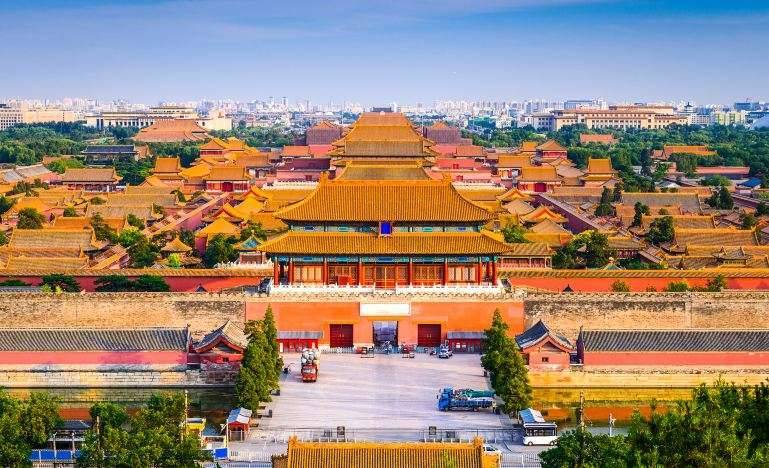

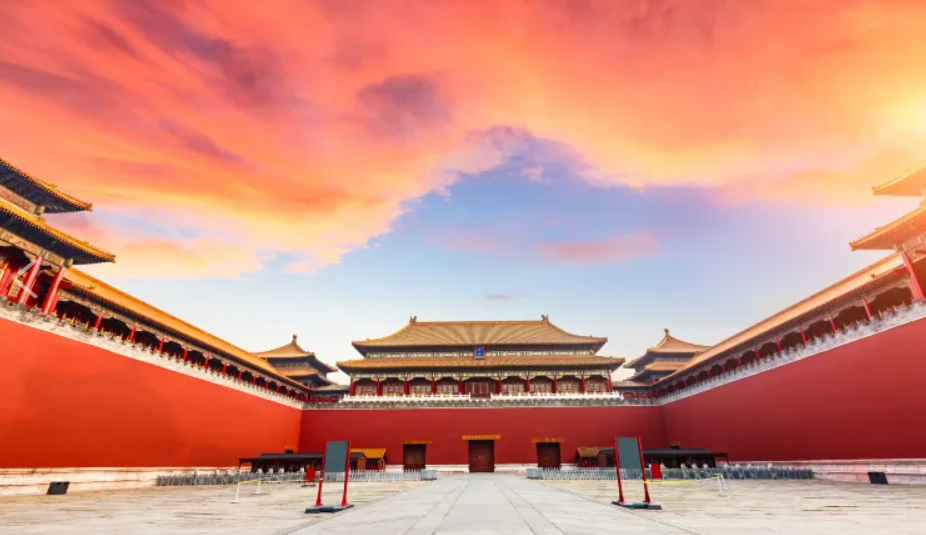
Enjoy lunch at an authentic Chinese restaurant along the way
Visit the Temple of Heaven, the Temple of Heaven is a dedicated altar for the emperors of the Ming and Qing dynasties to worship heaven, seek rain, and pray for a good harvest. It is a famous ancient architectural site in the country. The northern part of the altar is circular, while the southern part is square, symbolizing "the heavens are round and the earth is square." The entire Temple of Heaven is divided into the Inner Altar and Outer Altar, with well-known structures like the Hall of Prayer for Good Harvests and the Echo Wall located in the Inner Altar.
Regional Overview
The Inner Altar is divided into two parts, north and south, by palace walls. The northern part is the "Altar of Prayer for Grain," where the emperor holds the grand ceremony for praying for a good harvest in spring, praying for favorable weather and abundant crops. The main structures include the Hall of Prayer for Good Harvests, the Hall of Imperial Sacrifices, the East and West Side Halls, the Gate of Prayer for Good Harvests, the Divine Kitchen, the Sacrificial Pavilion, and the Seventy-Two Long Corridors.
The southern part is the "Altar of Heaven," an open-air three-tiered circular stone altar where the emperor would hold ceremonies to worship heaven on the winter solstice. Major constructions include the Altar of Heaven, the Imperial Vault of Heaven, as well as auxiliary halls, the Divine Kitchen, three storehouses, and the sacrificial animal pavilion.
The connection between the two altars is a stone platform that is 360 meters long, 28 meters wide, and 2.5 meters high, known as the "Sacred Road," also referred to as "Seashore Avenue," and "Danbi Bridge," symbolizing the long journey to be traversed to reach the heavenly court.



On the way back to the hotel, you can plan the evening performance or Peking Duck dinner with your guide and seek recommendations.
DAY 3 Badaling Great Wall - Bird's Nest - Water Cube
Our tour guide will meet you in the hotel lobby, and then we will start exploring the Great Wall.
Mutianyu Great Wall is located in Huairou District of Beijing, connecting the Juyong Pass Great Wall to the west and the Gubeikou to the east. It has been a military stronghold guarding Beijing since ancient times, known as the "Dangerous Ridge Barrier." The architectural style of the Mutianyu Great Wall is unique, with a dense arrangement of watchtowers, especially the three watchtowers standing on a single platform, which is quite rare among the Great Walls.

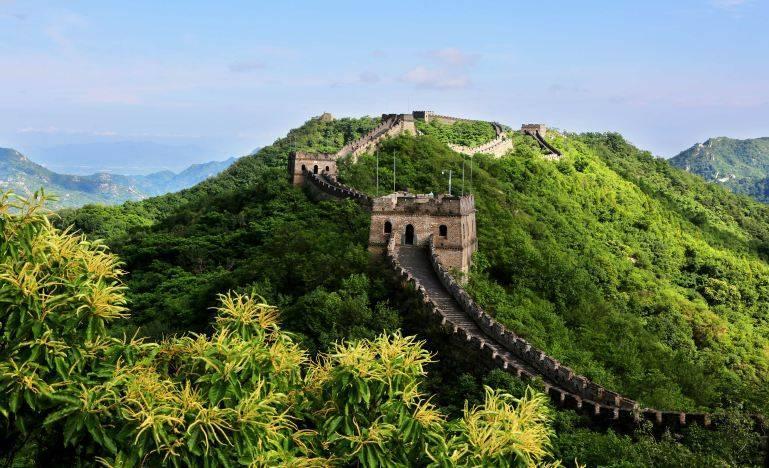
Enjoy lunch at a local Chinese restaurant near the Great Wall.
Drive back to Beijing, and you can take a short nap in the car. Visit the exterior of the Bird's Nest and the Water Cube, both of which are stunning buildings constructed for the Beijing Olympics. Return to the hotel for free time.
The Bird's Nest (National Stadium) is located at the northern end of Beijing's central axis. It was the main stadium for the 2008 Beijing Olympics and has become one of the new landmarks in Beijing in recent years, known for its high-end and grand appearance, as well as the many international competitions it has hosted.
The Water Cube (National Aquatics Center) is located on the north side of Beijing's urban area. The architecture is very unique, with an outer wall made up of more than 3,000 irregular air bubble pillows, resembling water molecules in a blue ocean when viewed from a distance. At night, the colorful lights are dazzling, making it a great place for night photography.


DAY 4 Beijing Drum Tower Yangmeizhu Xiejie - Nanluoguxiang - Xi'an
In the morning, you will have enough time to pack your luggage. Our tour guide and driver will wait for you in the hotel lobby. After checking out, we will load your luggage onto the vehicle, and you will have a half-day leisure tour. We will drive to Drum Tower, Yangmeizhu Xiejie, and Nanluoguxiang to experience the lively atmosphere of Beijing's hutongs. After lunch, the driver and guide will take you to the high-speed train station, where you will board the train to Xi'an (approximately five hours). Your Xi'an guide will wait for you at the station and assist you with the transfer to your hotel.
DAY 5 Terracotta Army of Qin Shi Huang - Chang Hen Ge Performance
Our guide will meet you in the hotel lobby and begin exploring the ancient city.
The Terracotta Army Museum, also known as the Terracotta Warriors, is a part of the burial pits of Emperor Qin Shi Huang. Together with the tomb of Emperor Qin Shi Huang, they form the Qin Shi Huang Mausoleum Museum.
The Terracotta Army of Qin Shi Huang is known as the eighth wonder of the world. More than a thousand soldier figurines unearthed here are all unique in appearance and vivid in expression, making it a splendid gem in the history of ancient Chinese sculpture art, praised as "one of the great discoveries in the archaeology of the twentieth century."


A Chinese-style lunch will be arranged near the Terracotta Army scenic area. Enjoy a large-scale landscape stage historical drama adapted from the narrative stories of Bai Juyi.
DAY6 Xi'an City Wall - Chengdu
After breakfast, check out of your hotel, and your guide will take you to visit theAncient City Wall of Xi'an, which is the largest and best-preserved city wall of its kind in China. Enclosing the former capital of China, it stretches nearly 14 kilometers, allowing you to explore on foot or by bicycle and enjoy your free time. After the morning activities, you will be transferred to Xi'an Airport to check in for your flight toChengdu. Upon arrival inChengdu, your local guide will meet you and transfer you to your hotel, providing an introduction to China's panda capital along the way.
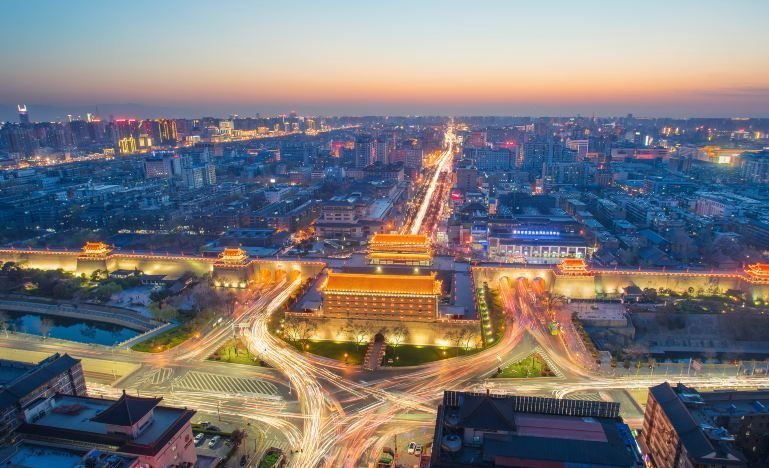

DAY7 Depart from Chengdu hotel → Panda Base - Sanxingdui Museum - Stay in Dujiangyan (Enjoy the night view of Dujiangyan)
Chengdu Research Base of Giant Panda BreedingThe base is home to many adorable giant pandas, where you can observe these cute national treasures up close. The base is located in the northern suburbs of Chengdu, about 10 kilometers from the city center, and is designed to fully simulate the natural living environment of giant pandas, featuring lakes, streams, bamboo forests, and lawns.
A must-visit landmark is our iconic Panda Tower. As a new landmark building in Chengdu, it is located at the highest point of the site, standing 69.8 meters tall with 11 floors. Its shape resembles a large bamboo shoot, while the interior resembles a blooming hibiscus flower, featuring 81 platforms distributed throughout for visitors to enjoy multi-angle views of the site’s landscape.

The [Sanxingdui Museum] is located on the north bank of the Duck River northwest of Guanghan City, Sichuan Province, China. Covering an area of more than 300 acres, it is a modern thematic archaeological museum. The museum has two main exhibition halls: the Comprehensive Hall and the Bronze Hall. The Comprehensive Hall primarily showcases the historical background, cultural connotations, and overall appearance of the cultural relics excavated from the Sanxingdui site. The Bronze Hall focuses on the large number of bronze artifacts unearthed at Sanxingdui, which are characterized by their unique shapes and exquisite craftsmanship, possessing high artistic and historical value. In addition to the main exhibition halls, the museum also features several temporary exhibition halls for hosting various thematic exhibitions and cultural activities. The architectural design of the museum is distinctive, utilizing a modernist design style that complements the historical and cultural atmosphere of the Sanxingdui site.

After the tour, take a car to the hotel in Dujiangyan. After dinner, you can take a night tour of Guankou Ancient Town and enjoy the night view of the South Bridge.
DAY 8 Chengdu - Chongqing
After checking out, the guide will take you toJinli Street. Here, you will find unique local street food and artisans everywhere, immersing yourself in the typical local culture and having the opportunity to taste traditional snacks and meet local craftsmen. The last stop of the day allows you to enjoy some leisure time atWangjiang Pavilion Park.
Then board the high-speed train from Chengdu to Chongqing. Upon arrival, if your travel schedule allows, your local guide will meet you and take you through the old city of Ciqikou. Following that, you will be escorted to board the Yangtze River cruise, which will finally set sail at 9:30 PM. As you cruise, enjoy the spectacular lights of the Chongqing city from the deck.


DAY9 Yangtze River Three Gorges Cruise, enjoy the scenery on both sides of the river on board, and visit the 【Fengdu Ghost City】 on land
Enjoy a delicious Chinese and Western style buffet breakfast in the morning light (cruise dining)
Cruise deck sightseeing, enjoy the wonderful journey
An easy and pleasant journey, a leisurely and comfortable cruise experience, how can it not greatly relax your mood?
The refreshing river breeze gently brushes against my face, and with a calm and peaceful mind, I enjoy the river view completely. Sipping on a warm cup of tea, even doing nothing feels extremely pleasant. Alternatively, I could bring my vibrant mood to the gym and get some exercise, letting my passionate energy shine through.
Fengdu Ghost City is located on the north bank of the Yangtze River in Fengdu County, Chongqing. It is said to be the location of the "Underworld" and is a concentrated embodiment of China's ghost culture. The legendary scenes of the Underworld, such as the Bridge of Helplessness and the Eighteen Levels of Hell, all have a real existence here.
Fengdu Ghost City is very convenient to explore. After entering the scenic area, you can follow the signs and take a mountain path uphill. Along the way, you will pass by familiar landmarks such as the Hengha Shrine, the Naihe Bridge, the Ghost Gate, the Yellow Springs Road, the Yama Hall, and the Eighteen Layers of Hell. You can also see statues of legendary figures like Bull-headed and Horse-faced, the Judge of the Underworld, and King Yanluo. The Eighteen Layers of Hell conveys the traditional concept of karmic retribution, encouraging people to do good and refrain from evil.
These mythical places of the underworld reflect the traditional Chinese understanding of life and death, ghosts, and hell. If you're interested, you can follow a guide to hear stories and learn about ancient customs and taboos.
When exploring the city, you can't miss the performance of the popular master - Stone Rolling, where over 300 pounds of iron and stone showcase incredible strength, leaving people truly admiring.



Cruise Freedom Ball
Invite your dance partner to enjoy a rare and delightful evening filled with romantic songs and dances on this enchanting night.
DAY 10 Yangtze River Three Gorges Cruise, enjoy Wuxia and Qutang Gorge on the ship, visit the 【Wushan Small Three Gorges】
The Small Three Gorges Tour is a scenic boat ride that lasts approximately 4 hours. Within the scenic area, there are colorful towering peaks and strange ridges, ever-changing mist and clouds, serene and clear waterfalls and springs, mysterious ancient caves and cliffs, as well as dense and thriving forest and bamboo groves, making it a delicately crafted natural bonsai. One can also find playful monkey groups climbing trees and rocks, pairs of mandarin ducks swimming together, various water birds soaring gracefully, diverse fish swimming in the emerald waters, and the joyful songs of birds chirping in the bushes, making it truly a renowned scenic animal park. Additionally, there are ancient hanging coffins of the Ba people, ship coffins, and ancient villages, which are precious historical relics. This unique gorge scenery, where natural landscapes blend seamlessly with cultural sites, is a dazzling gem shining brightly along the golden tourist waterway of the Yangtze River's Three Gorges.

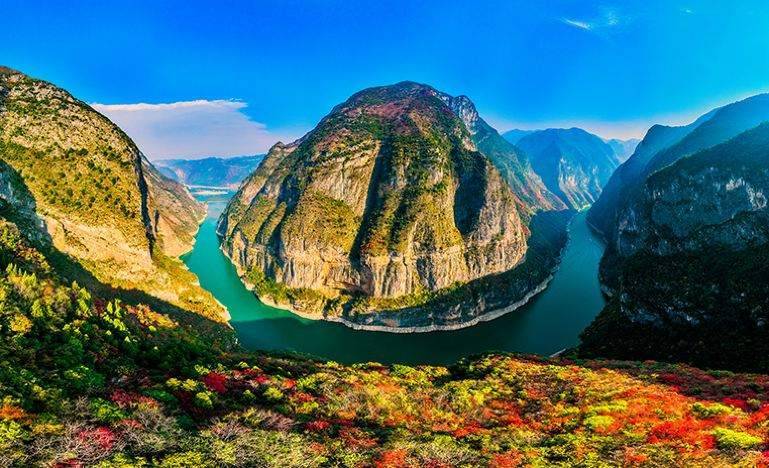
The Little Three Gorges refer to the Longmen Gorge, Bawu Gorge, and Dicui Gorge along the Danning River in the Wushan area, with a total length of 45 kilometers. It is one of the first AAAAA-rated scenic areas. It has been successively recognized as one of the "Forty Best Tourist Destinations in China," "Chinese Scenic Areas," and "Civilized Scenic Areas in Chongqing." Renowned figures have praised it as a "Chinese Wonder," "Heavenly Spectacle," "Not the Three Gorges, but Better than the Three Gorges," and "A Marvelous Gorge Under Heaven." There are also beautiful phrases such as "Once you've seen the vast sea, other waters seem insipid; apart from the Danning River, no other gorges are worth seeing. After returning from the Five Mountains, one needn’t look at other hills; after returning from the Danning River, one needn’t look at other gorges.”
Qutang Gorge is adjacent to Baidi City, with a total length of 8 kilometers. It combines grandeur, uniqueness, danger, and steepness, representing a narrow and perilous section of the Three Gorges. In Qutang Gorge, the northern bank of Chijia Mountain features three major cultural sites: the Laoguan Temple cultural site, the Daxi cultural site, and the Wushan Ape Man site, along with attractions like the Laoguan Temple signal station, Chijia Tower, ancient gun battery, ancient plank road, and Fengxiang Gorge hanging coffins. On the southern bank, Baiyan Mountain has the Mengliangti ancient plank road relics, cliff rock carvings, Xiniu Wangyue Peak, and Ape Man Peak, encapsulating 2 million years of human development history in China.
The stunning sight of "Kuwamen," also known as Qutang Pass, is located at the western entrance of Qutang Gorge. It commands the Bashu region to the west and controls Jingchu to the east, making it a strategically important location throughout history. The two mountains on either side of the river stand in opposition, with sheer cliffs rising vertically, as if carved by an axe or chiseled by a knife, plunging straight down into the Yangtze River, which flows majestically through the gorge. The heavens open a narrow path, the gorge broadens into a gateway, and the valley secures a river—this is Kuwamen. Renowned for its grandeur and magnificence, it has historically been celebrated as “Kuwamen, the strongest under heaven” and is now known as the "Gateway of Chinese Landscapes," serving as the background design for the fifth series of 10 yuan banknotes.


Wonderful Enchanting Three Gorges Theme Evening Party
The lively song and dance gala, with its passionate performances, connected the hearts of those traveling together through the Three Gorges. The artistic presentations by numerous professional performers, interspersed with interactive activities from the tourists, brought the atmosphere of the entire journey to a climax.
DAY 11 Yangtze River Three Gorges Cruise Tour, 【Three Gorges Dam】 Tour - Shanghai
After breakfast, disembark atMao Ping Dock in Yichang. Board the bus and drive to the world's largest hydropower project, theThree Gorges Dam, where you will tour the dam and learn about its design, construction, and how it currently serves the local people and region. After the tour, you will take a shuttle bus to theYichang Three Gorges Tourist Center, where your guide will meet you and escort you to the train station for your journey to Shanghai. InShanghai, your local guide will meet you and take you to your hotel, pointing out local landmarks along the way. Enjoy a free evening in downtown Shanghai.
The Three Gorges of the Yangtze River stretch from Baidi City in Chongqing to Nanjin Pass in Yichang, creating a magnificent mountainous canyon along the Yangtze River, and it is one of China's top ten scenic spots. As one of the birthplaces of ancient Chinese culture, this area is home to numerous historic sites, such as Baidi City, Huangling, and Nanjin Pass. Among them, Qutang Gorge is particularly steep, with sheer cliffs on both sides that are less than one hundred meters apart.

DAY 12 Chenghuang Temple/Bund/Nanjing Road Pedestrian Street
Your private driver and guide will be waiting for you in the hotel lobby.
Go to: City God Temple Tourist Area The City God Temple Tourist Area houses two main attractions, Yu Garden and the Old City God Temple, making it a must-visit place for tourists new to Shanghai. Here, visitors can experience the local customs of Shanghai, taste authentic Shanghai snacks and local cuisine. At night, the colorful landscape lights on the ancient-style architecture also make this place a beautiful sight to behold.
The Xiao Long Bao in Nanxiang here is a must-try, and you can also sit inside the Green Wave Restaurant, enjoying Shanghai's local cuisine while admiring the bustling crowd coming and going below.

The Bund, located along the Huangpu River, spans approximately 1.5 kilometers and serves as a symbolic landmark of Shanghai. The eclectic collection of international architecture and the night view of the river are its highlights.
The Bund is lined with dozens of classical revival buildings of various styles, among which the famous Bank of China Building, Peace Hotel, Customs House, and HSBC Building showcase the splendor of what was once known as the "Wall Street of the Far East." Surprisingly, these buildings were not designed by the same architect nor built during the same period, yet they possess a unique harmonious beauty. The Bund features a variety of architectural styles, including French classical, French mansion style, and Gothic, all of which are significant historical sites and representative buildings of modern China, making it a beautiful sight along the Huangpu River.
As night falls, the neon lights on both sides twinkle and shine. Taking a sightseeing cruise or ferry on the Huangpu River, with the river breeze gently caressing your face, one side showcases the historical Bund, while the other features the modern architectural landmark of Lujiazui. The graceful silhouette of the Waibaidu Bridge allows you to appreciate the beauty of this bustling metropolis from a different perspective.

Nanjing Road Pedestrian Street is about 1,200 meters long, with shops lining both sides. At a glance, modern buildings are mixed with European-style old buildings. The continuous hanging shop light boxes create a mesmerizing view, especially under the night sky when the neon lights flicker, adding a unique charm. You can also take a ride on the "Ding Ding Car," a small version of the old-fashioned streetcar, to experience the flavor of old Shanghai.
The pedestrian street starts from Xizang Middle Road (to the east of People's Square) and ends at Henan Middle Road, with a dark red marble monument at each end. Walking along the pedestrian street, you can see creative urban sculptures everywhere, as well as unique streetlights, flower beds, and telephone booths. If you look down, you'll find various manhole covers engraved with different architectural patterns of the city, and there are plenty of benches in the middle of the street for tourists to rest.
Nanjing Road Pedestrian Street is one of the bustling commercial streets in Shanghai. As early as the early 20th century, it had already become a gathering place for department stores, and browsing here will surely yield great rewards. Today, it features both established department stores like Yaohan, Hualian Commercial Building, and Silk Department Store, as well as large shopping centers such as New World City, Bailian Shimao International Plaza, Plaza 66, Hengji Celebrity Shopping Center, and Hongyi Plaza. Here, you can almost find any kind of product.
Nanjing Road Pedestrian Street is still a paradise for foodies, with shopping centers featuring various fashionable restaurants and caf←s, as well as several restaurants and food stores, such as the traditional Shanghai cuisine restaurant Lao Ke Le, De Xing Restaurant, and Cui Ting Restaurant, along with the First Food Store and Shen Da Cheng Dim Sum Shop, among others.
After enjoying the beautiful night view, a special car will take you to the hotel.
DAY13 Oriental Pearl - A Warm Home or the Next Destination
Start your beautiful day with breakfast, whether it includes a meal depends on the room type you choose.
Special vehicle to the Oriental Pearl Tower attraction.
The Oriental Pearl Tower stands tall in Lujiazui, Pudong, Shanghai, overlooking the Bund across the river. It is an iconic building in Shanghai. Dining in the 267-meter-high revolving restaurant while enjoying exquisite cuisine and the night view of the city is an extraordinary experience.
The Oriental Pearl Tower stands 468 meters tall, composed of 11 spheres of varying sizes connected together. This design is inspired by the beautiful concept of "large pearls and small pearls falling onto a jade plate." By ascending to the three main spheres, visitors can appreciate the cityscape on both sides of the Huangpu River from different heights. Particularly from the fully transparent observation corridor at 259 meters, one can enjoy a unique view of the entire city in a "skywalk" style. Experiencing the vibrant scene of the "City That Never Sleeps" from the observation deck at night is an unforgettable pleasure.

After enjoying lunch, we will take you to the airport or high-speed train station based on your flight information.


